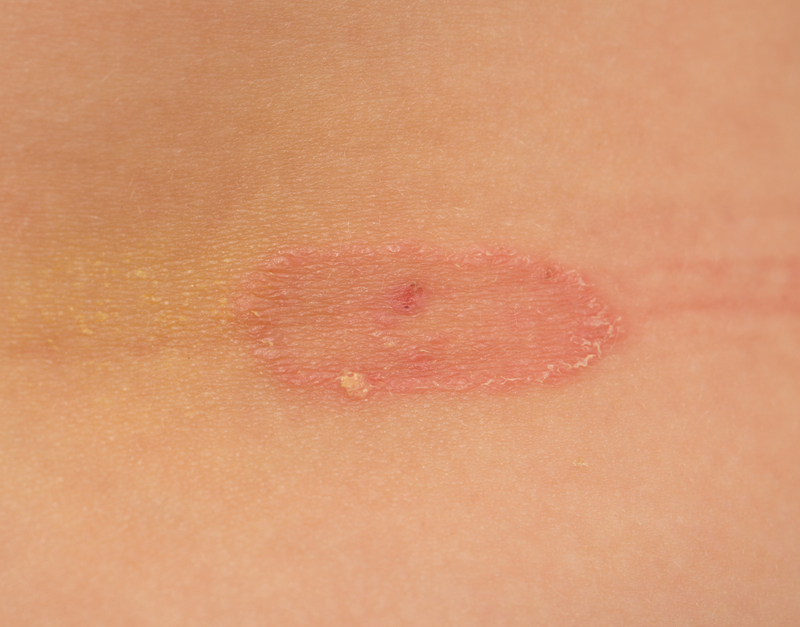What Is Ringworm?

Ringworm is an infection of the skin; it causes a scaly rash that can turn red and itchy.
The name "ringworm" comes from the appearance of the rash, which can grow into a circle with wavy edges and a clear center — resembling a snake or worm biting its tail. But how do you get ringworm? It's actually a moldlike fungus that causes the infection.
The fungus results in related afflictions that go by several different names, depending on the body part affected. Skin and nail infections are usually called ringworm, while the same infection in the groin goes by the moniker jock itch. When it affects your toes, you call it athlete's foot.
The sports-related titles are no coincidence. The ringworm fungus thrives in warm, wet environments, such as locker rooms, pools, sweaty wrestling mats and moist skin. It also spreads primarily via skin-to-skin contact with an infected person. Wrestlers get ringworm frequently, as do other athletes engaged in physical-contact sports.
To keep your skin ringworm-free, avoid contact with people who have the rash. (Wrestling teams often inactivate grapplers who contract the fungus, until they recover.) You can also pick up ringworm from cloth or other surfaces that have touched an infected individual. So, to avoid a ringworm infection, don't share towels, clothes, sports equipment or sheets, and wear flip-flops in the locker room and shower.
Ringworm can infect pets, too, particularly cats and dogs. And this is a zoonotic disease, meaning it can pass from one animal species to an unrelated species, such as from a dog to a human. So don't touch rashes on a stricken Fido or Fluffy.
You can treat mild cases of ringworm with over-the-counter topical anti-fungal medication (usually a cream or spray that you apply to the affected skin). For severe cases, your doctor may prescribe anti-fungal pills. Both treatments take at least one week to be effective.
Sign up for the Live Science daily newsletter now
Get the world’s most fascinating discoveries delivered straight to your inbox.
Follow Michael Dhar @michaeldhar. Follow LiveScience @livescience. We're also on Facebook & Google+.

Michael Dhar is a science editor and writer based in Chicago. He has an MS in bioinformatics from NYU Tandon School of Engineering, an MA in English literature from Columbia University and a BA in English from the University of Iowa. He has written about health and science for Live Science, Scientific American, Space.com, The Fix, Earth.com and others and has edited for the American Medical Association and other organizations.









